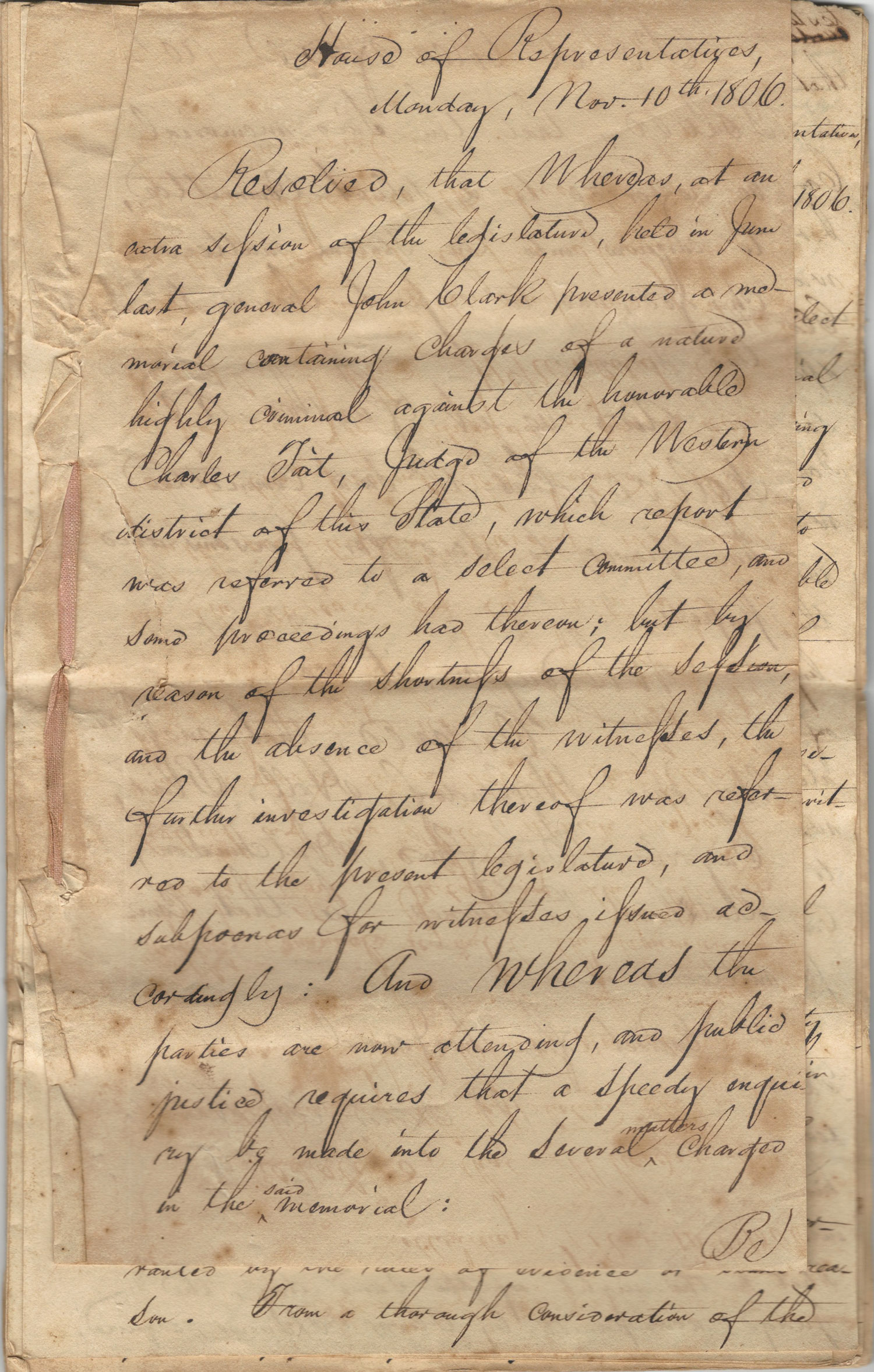The Dawn of the Political Power of William H. Crawford


The full report of the Georgia House of Representatives on the Impeachment of Judge Charles Tait, whose exoneration deepened the political rift in Georgia and led to a duel for Crawford.
The Yazoo land scandal was a massive, real estate fraud perpetrated, in the mid-1790s, by Georgia governor George Mathews and the Georgia General Assembly. Georgia politicians sold large tracts of territory in the Yazoo lands, in what are now portions of the present-day states of Alabama and Mississippi, to political insiders at...
The Yazoo land scandal was a massive, real estate fraud perpetrated, in the mid-1790s, by Georgia governor George Mathews and the Georgia General Assembly. Georgia politicians sold large tracts of territory in the Yazoo lands, in what are now portions of the present-day states of Alabama and Mississippi, to political insiders at very low prices. The law enabling the sales was overturned by reformers the following year, but their ability to do so was challenged in the courts. It became a political football.
In 1806, Judge Charles Tait, a Virginian took a late night deposition from someone who claimed that General John Clark had sold land for $20,000 to a friend for counterfeit money. Clark objected and moved for the impeachment of Tait.
William H. Crawford was at the dawn of what would be a distinguished political career, one that would see him become Senator, Ambassador and Cabinet Member to two Presidents. But in 1806, he was a member of the Georgia House of Representatives. He was also a friend of Crawford’s.
What follows is the entire report of the committee, four documents, provided to Crawford.
Document signed, November 10, 1806, Extract from the journal of the George House of Representatives, 2 pages, in the hand of clerk William Turner of the Georgia House of Representatives, referring the case to a select committee for investigation.
Document signed, November 29, 1806, 6 pages, the official and final report of the committee, clearing Judge Tait and stating the full confidence of the committee in him; includes the case against him, the findings, and the final vote tally; in the hand of William Turner, clerk of the Georgia House of Representatives.
The full depositions of 5 people interviewed by the committee, including that of Crawford, comprising around 20 pages. Signed by William Turner, clerk of the Georgia House of Representatives.
The final document is the “confession of Robert Clary,” which ultimately cleared Tait. Signed by William Turner, clerk of the Georgia House of Representatives.
This document helped shape Georgia politics for a generation, earning the enmity of Clark toward Crawford and helping split the state politics into two factions. The heads of these two were John Clark and William H. Crawford. As a result of this, Clark challenged Crawford to a duel, which left the latter wounded but the former’s political power lessened. This incident marked the rise of the Crawford faction.
The next year, Crawford would became State Senator and shortly after a US Senator. In 1813, he was tapped to go to the Court of Napoleon and serve there as U.S. Ambassador.

Frame, Display, Preserve
Each frame is custom constructed, using only proper museum archival materials. This includes:The finest frames, tailored to match the document you have chosen. These can period style, antiqued, gilded, wood, etc. Fabric mats, including silk and satin, as well as museum mat board with hand painted bevels. Attachment of the document to the matting to ensure its protection. This "hinging" is done according to archival standards. Protective "glass," or Tru Vue Optium Acrylic glazing, which is shatter resistant, 99% UV protective, and anti-reflective. You benefit from our decades of experience in designing and creating beautiful, compelling, and protective framed historical documents.
Learn more about our Framing Services







































































































